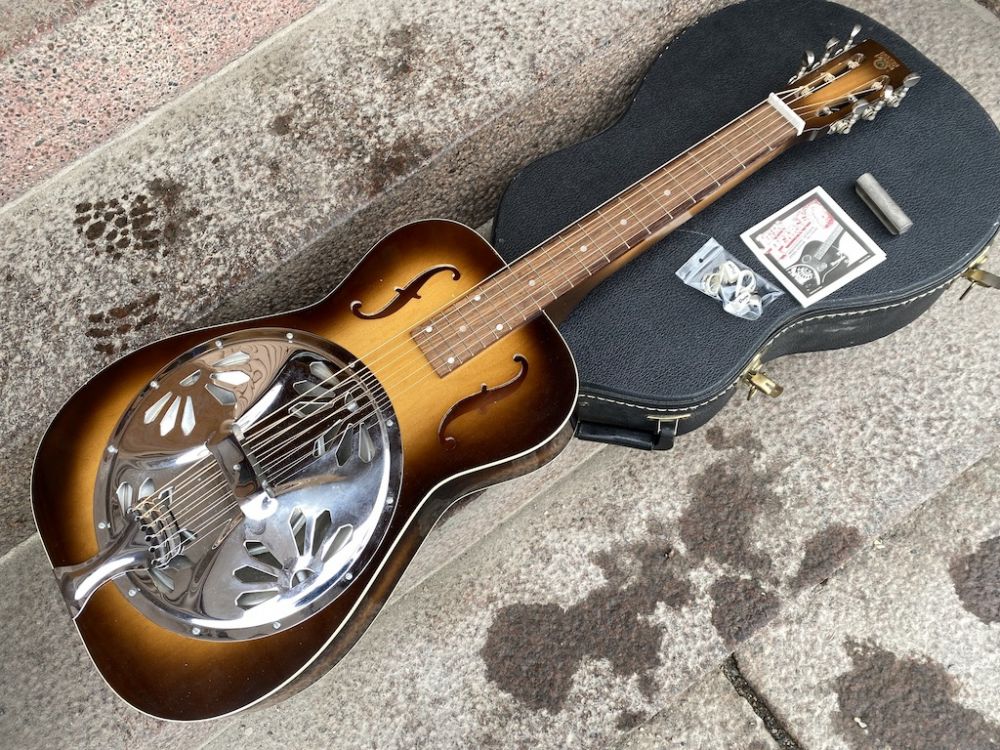The resonator guitar, often affectionately referred to as the Dobro, is a unique instrument known for its rich, twangy sound and distinctive appearance. Originating in the early 20th century, the resonator guitar has found its place in various musical genres, including blues, bluegrass, country, and folk. If you are a beginner intrigued by the Dobro’s allure, here’s a primer to help you understand its dynamics.
Understanding the Resonator Guitar
Unlike traditional acoustic guitars, the resonator guitar features a metal resonator cone or cones mounted inside its body. These cones, typically made of aluminum, amplify the sound produced by the strings, resulting in a distinctively loud and vibrant tone. The resonator’s design allows for increased volume and projection, making it ideal for solo performances and ensemble settings alike.
Playing Techniques
Learning to play the resonator guitar requires mastering various techniques unique to the instrument. Here are some fundamental techniques to get you started:
Fingerpicking – Fingerpicking is the primary technique used to play the resonator guitar. Beginners should focus on developing dexterity and control over individual fingers to produce clear, articulate notes. Practice fingerpicking patterns and exercises to improve coordination and accuracy.
Slide Guitar – One of the defining features of the resonator guitar is its suitability for slide playing. A dobro for beginners is worn on the player’s finger to glide along the strings, producing smooth, expressive melodies. Experiment with different slide materials and techniques to find your preferred sound.

Open Tunings – Many resonator guitar players prefer to use open tunings, which involve tuning the strings to form a chord when played open. Open tunings facilitate chord voicings and harmonic possibilities unique to the resonator guitar. Experiment with open tunings such as Open G DGBDGB or Open D DADF#AD to explore new sonic landscapes.
Palm Dampening – Controlling the sustain and resonance of the resonator guitar is essential for achieving clarity and precision in your playing. Practice palm dampening techniques to selectively mute strings and control the decay of notes, particularly when using slide or fingerpicking techniques.
Exploring Musical Styles
The resonator guitar’s versatility makes it well-suited for a wide range of musical styles. Whether you are drawn to the bluesy licks of Delta blues or the intricate melodies of bluegrass, the Dobro offers endless possibilities for creative expression. Experiment with different genres and musical traditions to develop your unique voice as a resonator guitarist.
Maintenance and Care
Proper maintenance is crucial for preserving the tone and playability of your resonator guitar. Keep the instrument clean and free of dust and debris, paying special attention to the resonator cones and strings. Regularly lubricate the tuning machines and adjust the action as needed to ensure optimal playability.
As you embark on your journey with the resonator guitar, remember that patience and dedication are key to mastering this unique instrument. Embrace the challenges and discoveries along the way, and do not be afraid to experiment with different techniques and musical styles. With time and practice, you will unlock the full potential of the Dobro and discover the endless possibilities of its resonant sound.